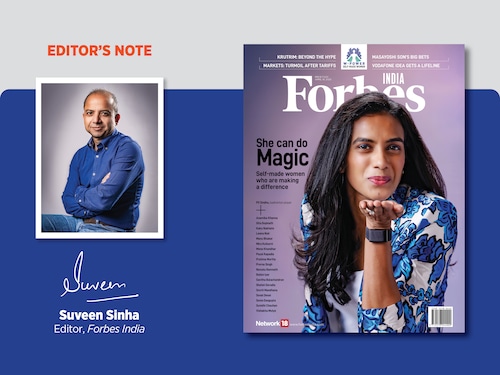Forbes India W-Power 2025: What to expect
What you have in your hands are profiles of 20 women who are no less in the impact they are creating, and not merely because they bring warmth and empathy to a place



Joseph Joffre, commander-in-chief of the French army during World War 1, became a symbol of French Resistance on the Western Front. According to history.com, Joffre was credited with formulating and implementing France’s military strategy, known as Plan XVII, which focussed on offensive attacks against Germany. He later faced criticism as casualties piled up and was removed as commander in 1916.
Much has been written on Joffre, including his own two-volume memoir. But why we recall him today is because of his enduring observation about the role of women in the first World War. “If the women in the factories stopped work for 20 minutes, the Allies would lose the war," Joffre wrote.
He was exaggerating in pegging the downtime at 20 minutes, but he had good reason to extol the role of women in the war. Stories abound that, as men went to battlefronts, factories of the Allied Forces were kept running by women who worked as carpenters, welders, machinists, technicians, and in other so-called male jobs.
According to the website of Engineering and Technology (eandt.theiet.org), more than 30,000 women were recruited to handle explosives in 1916 at the Royal Arsenal in Woolwich, London. In a Scotland village, a factory was dubbed The Feminist Munition Factory, where women were making shells.
It is not only about war-time work it is generally believed that women help improve sustainability, innovation, and cost efficiency. They work well across functions and teams, and are good mentors. A factory floor with enough women is more civil and warmer.
Yet, this general belief also hides a problem. It is ‘generally believed’ that women are good at some things, usually things such as empathy, diversity, bringing warmth to a place, multitasking, etc. By praising their roles in these aspects, we perhaps imply that they are not great in others. And that is a grave folly.
Sure, Field Marshal Joffre acknowledged the vital contribution of women in the war, but we do not hear of too many women military commanders. Even in manufacturing, where Joffre praised women, the subsequent decades saw a decline of females in the labour force as the perception gained ground that sturdier folks were needed to do the job. The same website that acknowledges the role of women in war-time manufacturing wonders whether they were engineers or mere technicians.
The modern era has seen things change, but not enough. A report by the Ministry of Statistics and Programme Implementation released on April 6 shows that the labour force participation rate for women aged 15 and above rose from 49.8 percent in 2017-18 to 60.1 percent in 2023-24. The same report also says women held 28.7 percent share in companies’ boards of directors in 2024-25. In senior management roles, women occupied 16.6 percent of positions.
In 2024-25, across levels, two males were hired for every female. It makes you wonder if this ratio could have been different had there been more women in decision-making roles (senior management, board of directors).
Or maybe if the stories of women who make a difference and are pioneers are better documented and narrated. Take for example Ada Lovelace. Daughter of poet Lord Byron, Lovelace, who died in 1852 at the age of 37, is acknowledged to be the first computer programmer ever.
It would be anachronistic to profile Lovelace in 2025, but we do not really need to. What you have in your hands are profiles of 20 women who are no less in the impact they are creating, and not merely because they bring warmth and empathy to a place.
Best,
Suveen Sinha
Editor, Forbes India
Email: suveen.sinha@nw18.com
X ID: @suveensinha
First Published: Apr 14, 2025, 11:32
Subscribe Now